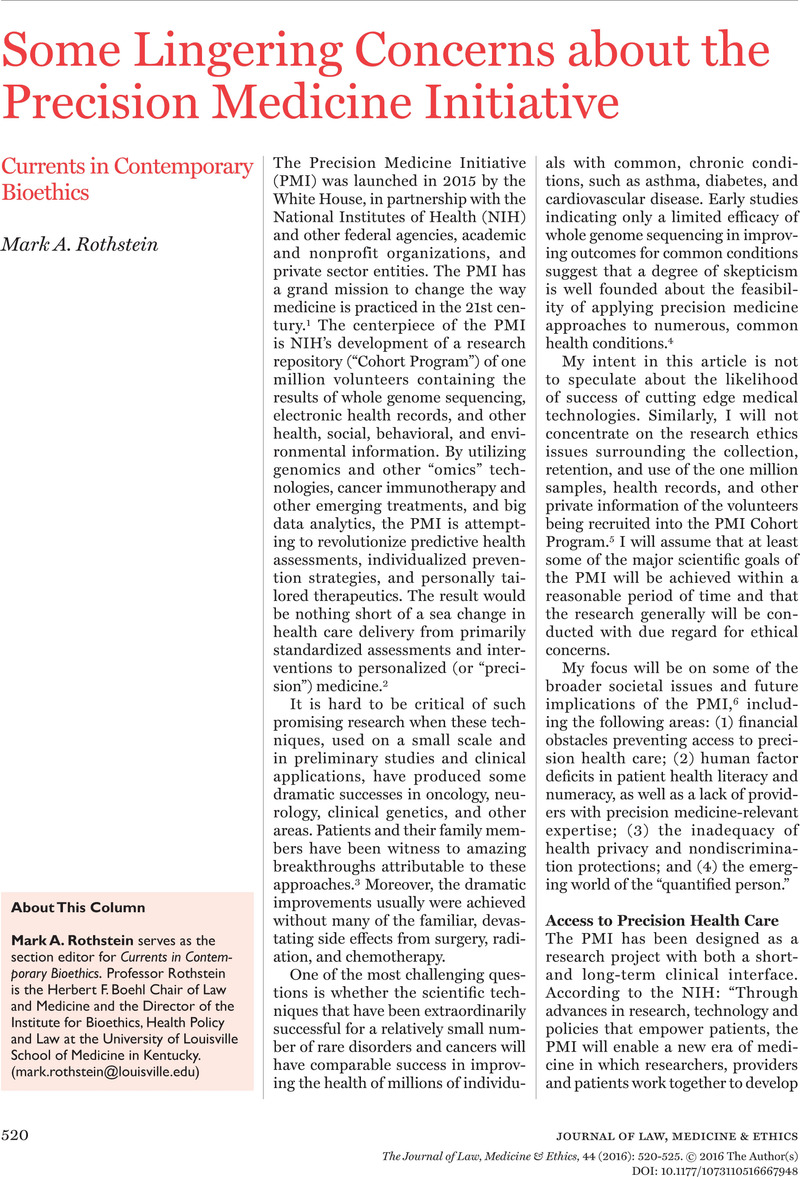Article contents
Some Lingering Concerns about the Precision Medicine Initiative
Published online by Cambridge University Press: 01 January 2021
Abstract

- Type
- Columns: Currents in Contemporary Bioethics
- Information
- Journal of Law, Medicine & Ethics , Volume 44 , Issue 3: Contemporary Challenges in Informed Consent: Law, Research Practice, and Ethics , Fall 2016 , pp. 520 - 525
- Copyright
- Copyright © American Society of Law, Medicine and Ethics 2016
References
- 8
- Cited by


